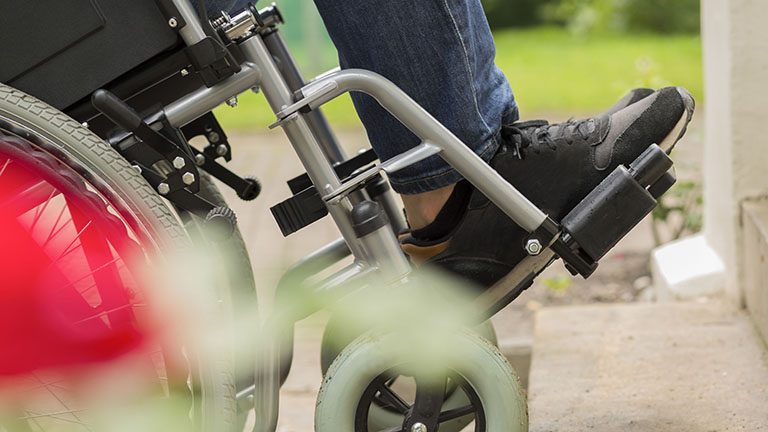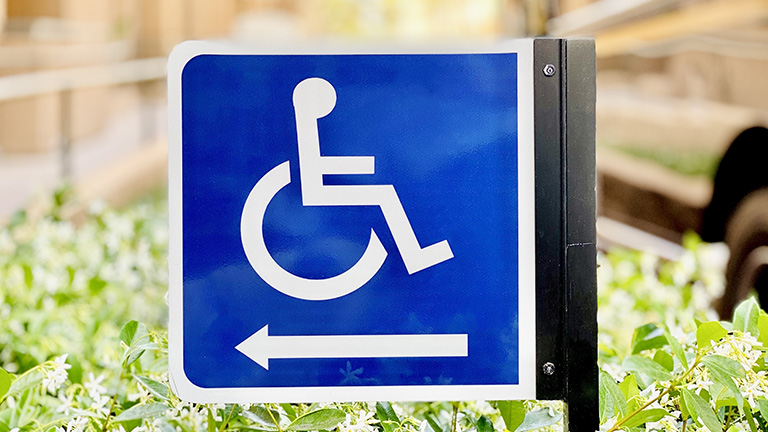In the 27 years since the Americans with Disabilities Act (ADA) became law, a greater awareness of accessibility inclusion and universal design has had a tremendous impact on daily life. However, it may often seem as if many institutions and locations are still not fully ADA-accessible. While it is true that not all places are fully-accessible, nor are some locations as accessible as they could be, in many cases, it is a simple misunderstanding of what it means to be ADA-compliant that causes a great deal of frustration for the public.
The Problem: Misunderstanding the ADA
It is a common occurrence to see locations that do not appear as accessible as we may believe they should be. For instance, curbside or accessible parking may be farther away from an entrance than we would prefer, or additional parking and access may be located inconveniently. Furthermore, certain architectural barriers may exist, such as narrow entrance ways or walls and supports in primary areas. However, such conditions do not always constitute ADA non-compliance. This may be due to several reasons:
- The ADA did not require existing buildings to conform to accessibility standards immediately; rather, accommodations are made during alterations or renovations.
- The ADA recognizes that some modifications are impossible for some buildings. For example, if an accessibility modification requires the removal of a loadbearing wall or building support, the modification may be impossible. In addition, a request for some accessible modifications to historic properties may be dismissed if those modifications negatively impact the historic value of the property.
- In the event that an existing facility is renovating their primary function area, the surrounding aspects (i.e., sidewalks and paths of travel, entrances, restrooms, etc.) are required to be made accessible. However, such modifications are only required to be made as long as they do not exceed 20% of the total cost of the renovation. As a result, while as many modifications as possible must be made within that 20%, some alterations may not be feasible to carry out.
For more information about the ADA read: Navigating through ADA and ADAAG Code Interpretation
Methods for Resolving ADA “Inaccessibility”
Method 1: Contact coordinators for reasonable accommodation
In most cases, public service entities, private businesses, and local community programs all have disability and accessibility resource coordinators or a human resources department. In addition to their other duties, these individuals address any accessibility concerns and requirements as they pertain to their associated organizations. Therefore, contacting the coordinator or resource office should always be the first step towards resolving ADA accessibility concerns.
The coordinator or human resource office will be able to provide information regarding ADA compliances, as well as any planned projects to provide reasonable accommodations that may be necessary. It may be that the specific concern is in the process of being addresses, is unable to be addresses, or has already been addressed by alternate routes or some other permanent accommodation.
In addition, should accommodations be required on an individual basis, the coordinator should be able to provide assistance. Such accommodations are often easy and may include replacing door handles, installing door open-assist mechanisms, as well as provide personal assistance, such as interpreters, mobility assistance, and councilors.
Method 2: Organize Fundraisers and Write Grant Proposals
When contacting an accessibility coordinator or a human resource office, consider speaking with them about organizing community fundraisers or offer to help write grant proposals to fund specific accessibility alterations. Many U.S. organizations, such as school districts, private businesses, and nonprofit programs are underfunded, which constitutes a problem for making large scale accessibility modifications to existing facilities.
Method 3: Start or Join a Local Disability Committee
Unfortunately, the grant writing process is lengthy, and organizing fundraisers may yield too little, too slowly. Furthermore, either as a result of spars funding or other extenuating circumstances, personnel often don’t have the time to organize fundraisers or write grant proposals. However, instead of attempting to write grants or start fundraisers as an individual, consider starting, joining, or approaching a committee. As a part of a committee, it is easier to rally larger community support, hold larger and more frequent fundraisers, and garner the attention of politicians and other similarly interested organizations.
In general, committees have an easier time organizing and directing the capabilities of a community. For example, contractors may be willing to donate their time and resources or work at a lower rate in order to improve their community. Likewise, some committee members may have connections that can be leveraged in order to instigate rapid change.
In Summary: Key Points to Instigating Positive Change
- Contact a coordinator: The disability resources coordinator should be the main contact in the event any accessibility questions or concerns surface, and before any action is taken. If you have questions regarding the accessibility compliance of an institution, contact the coordinator for specific information and to request accommodations.
- Volunteer your time: In the event that you consider current conditions to be unacceptable, contact the coordinator to make immediate accommodations and ask how you may be able to help improve current conditions. Many times, volunteering your time to assist with further accommodations or to help organize fundraisers and write grant proposals to finance further accessibility modifications is possible.
- Start or join a committee: Often, school districts and many other organizations are underfunded, causing modifications to be bound to a minimum criterion. However, community members acting as an organized body are commonly able to collaborate with these underfunded groups to improve conditions by volunteering their time, organizing fundraisers, or bringing the issue to other interested parties.
For information about becoming more accessible, see “6 Overlooked but Readily Achievable ADA Compliances.” For information about the ADA visit the ADA website.
*Note: Wheelchairlift.com and any of its affiliates have no authority to offer sound legal counsel and, as such, no statements contained within this document should be considered legal advice.



